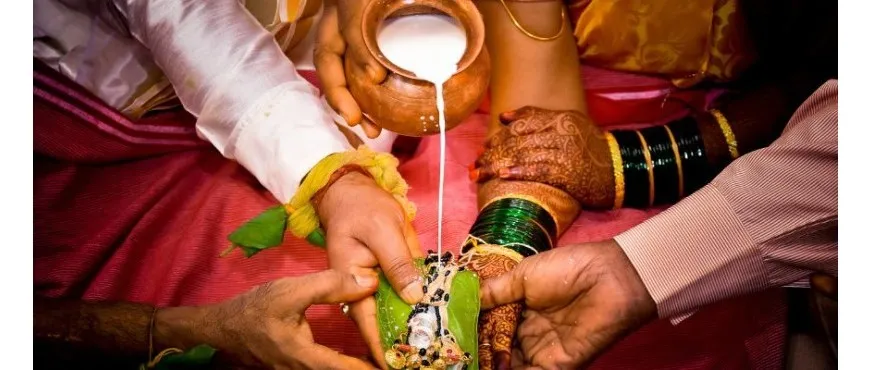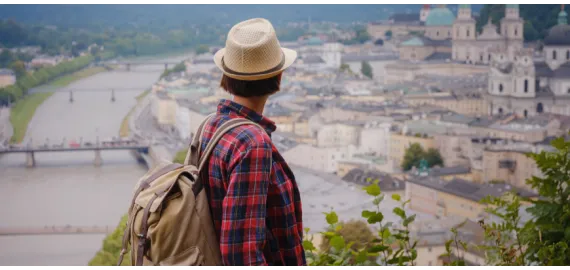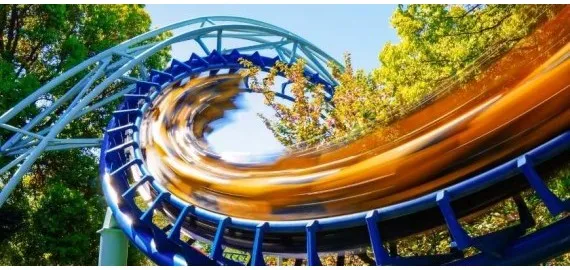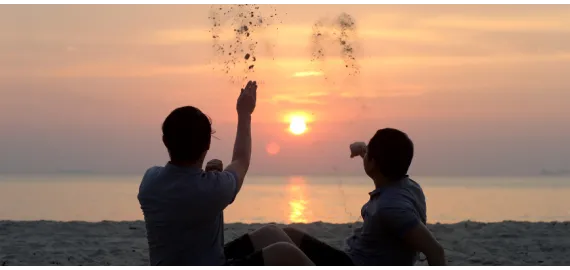Shopping Cart
Location
Cities
Best Wedding Tourism Destinations in India
Blog
Home Blog
CATEGORIES
All Categories

Best Wedding Tourism Destinations in India
9 Best Wedding Tourism Destinations in India
All religions and cultures are given the same amount of respect in Indian society. And if we talk about weddings, we know that every state has its unique culture, attire, and religious traditions. People now prefer destination weddings under blue skies, hill stations, beaches and many beautiful destinations. However, as a traveller, you might be interested in witnessing different kinds of weddings where bride and groom exchange vows and uniquely tie the knot.
There are 29 states in India, and each has distinctive customs and traditions on how a destination wedding in India should be enjoyed and celebrated. So, without further ado, here are some weddings in various states.
Kerala Weddings
Kerala wedding ceremonies are known for having brief and precise ceremonies. Compared to other traditional Indian weddings, they have very few rituals and functions.
Most traditional Kerala Nair weddings take place in a temple surrounded by friends, family, and the divine presence. They begin with Nischayam, in which they exchange rings with blessings. Then there's the Mehndi function. Following that, the main wedding takes place, which is divided into four ceremonies.
The first is Dakshina Kodukkal, who seeks blessing from everyone before leaving for the wedding venue. The groom then performs Kanyadaan and Pudamuri, in which the groom gives presents to his bride with a saree on a platter. Then Sadhya, a traditional Nair wedding meal, consists of 25 dishes served on a banana leaf. The final function is Griha Pravesh, during which the bride enters their new home.
The most beautiful aspect of their wedding is that their bride wears a beautiful white and gold silk saree throughout the ceremony, which she finds very elegant. On the other hand, the groom wears a Mundu and a cotton cloth draped around the waist.
Tamil Nadu Weddings
A Tamil wedding is full of exciting rituals that occur before, during, and after the wedding. Their wedding consists of various functions and rites, each carried out with great affection and joy.
Their function began with NakshatraPorutham, a horoscope-matching ritual, followed by a formal marriage agreement ritual, and then Pandan Kaal Muhurtham, in which they worship the god for the betterment of the newlywed life. Then, Saumangali Prarthanai is a type of pooja in which only married women participate. Pallikal Thellichal then decorates the eartgenware pots. Then Vrutham performs this ritual at the groom's home, where he seeks permission from his father to proceed with the other rituals.
Then there is Naandi Shraddham, where people from the groom's house come to see the bride, Nishchayathram, which is an engagement celebration; MangalaSnanam, which is a Haldi function; Gauri Puja, Kashi Yathra, where the groom's side people come to the venue, MaalaiMaatral, where the bride enters, Oonjal, where the couple sits on the swing, SaptapadiReception, Grihapravesham and many more functions like this.
Here, a Tamil bride wears a Koorai Saree, traditionally red and styles her hair in a bun with flowers. The groom is dressed in a dhoti. They have a simple yet elegant appearance.
Punjab Weddings
One of the most joyous types of the wedding is the Punjabi wedding. There is a lot of laughter, a diverse selection of foods, and a range of beverages, and the most important thing is that they express their feelings in the healthiest way possible. The fact that they have a lot of dancing at their wedding is another highlight of their marriage.
The traditional wedding traditions of Punjab are Takha, Rokha, Mangni, Sagai, Sangeet, Mehendi, pheres and kanyadaan.
Most importantly, on the wedding day, the bride wears 21 bagels in ivory and red colours, which is considered a symbolic and ceremonial number on each arm proportionally. Additionally, the bride wears an outfit with golden and silver satin threads, sequins, stones, heavy Zari work, and various lehenga cholis and salwar suits, mostly green or red.
Manipur Weddings
A wedding in Manipur is known for being one of the liveliest, most colourful, and most stylish celebrations in the nation.
The events will begin with Hinaba, which is the first meeting of the couple to be. The next step is Yathang Thanaga and Waraipot Puba, where the bride and groom's families approve. After that, there is a ritual known as Hejiapot, an engagement.
Following that, there is a ceremony known as Bor baton and Leilenga, where a young boy goes to the groom's house early in the morning to invite him for other celebrations. After that, the primary wedding ceremony, known as Luhongba, took place there. Finally, the celebration ended with a Chaoba, also known as a Reception.
The world-famous Raasleelas and the traditional dance of Manipur, which show off the culture of their state, are the two things that stand out as the most beautiful aspects of the state. And at the wedding, the bride wears a traditional skit with a sarong, and the husband wears a plain white kurta and dhoti.
Bengal Weddings
The colourful flower garlands and intricate traditional food spreads at Bengali weddings have gained worldwide fame. This kind of wedding in India and unique in itself, and the wedding celebrations are worth watching.
The ceremony began with the Adan Pradan, Ashirvad, and Aai Budo Bhaat, one of the distinctive traditions unique to Bengali culture. This meal is considered the groom's final supper as a bachelor before marriage.
Then Vridhi, Dodhi Mangal, Ganga Nimontron, Gaye Holud, Sankha Pola Porano, which is another famous ritual in which the purohit chants mantras and performs a puja when the bride's hands are embellished with 'Sankha, means moon' and 'Pola means good health' by seven married women. After that, Adhibas Tatva, Kubi Patta, The Bor Jatri, Bor Boron, Potta Bostro, Saanth Paak, Subho Drishti, Mala Badal, Sampradan, Yagna, Saptapadi, Anjali, Sindoor Daan, Bashor Ghar, Bashi Biya, Bidia, Bou Boron, Kaal Ratri, Bou Bhat and celebration ended with Dira Gaman.
This wedding is made even more beautiful and emotional by the tradition of the groom and bride making eye contact with one another as they say their vows to one. However, the most touching part of the ceremony is when the bride enters the reception on a stool hoisted by her brothers.
Assam Weddings
Weddings in Assam are the most understated, straightforward, and genuine celebrations possible. They adhere carefully to the rites and respect their people's traditions. The entire wedding ceremony takes place over approximately two to three days.
The ladies of the house sing the traditional song "Biya Naam" or "Biya geet" during all of the pre and post-celebrations of their wedding, and this is one of the best things that make their wedding more memorable and enjoyable.
These are the following ceremonies that celebrated in Assam are Juran Diya, Tel Diya, Pani Tula, Daiyan Diya, Nau Purushor Shraddha, Ceremonial Bath, Reception, Arrival of the groom, Dora Aaha, Bhori Dhuwa, Wedding, Saptapadi, Khel Dhemali, Maan Dhora, Bidaai, Ghor Gosoka, Khuba, Ghor Gosoka, Khuba Khubi, Phool Soja and Aathmangla.
Gujarat Weddings
A wedding in Gujarat is a beautiful opportunity to showcase the state's rich cultural heritage and colourful customs. Even if some older customs have been modernised or updated over the years, most rites are still celebrated.
Functions started with Chandlo Vidhi, Gol Dhana, Ganesh Matli, Griha Shanti, Mehndi, Sangeet Sandhya, Mandap Mahurat, Pithi, Mosalu, Varghodo, Agaman, Ponknu, Jaimala, Madhuparka, Antarpaat, Kanyadaan, Hasta Milap, Mangal Pheras, Saptapadi, Sindoor Daan, Saubhagyavati Bhava, Chero Pakaryo, Reception, Vidaai, Ghar Nu Laxmi, and celebrations ended with Aeki Beki.
The most well-known custom at a Gujarati wedding is when the groom pays a visit to the home of his future mother-in-law to receive her blessing. In return, the groom's mother gives her blessing to her son-in-law by grabbing his nose while he struggles to escape her.
Rajasthan Weddings
Weddings in Rajasthan are among the most royal of all weddings because they showcase the state's extensive cultural history and splendid way of life. These weddings feature elaborate decorations, vast guest lists, and a wide range of traditional Rajasthani dishes.
The engagement, the Mahira Dastoor, the Toran, the Satapadi, the Bidaai, the Ganpati Sthapana, the Palla and Janev Ceremony, the Nikasi, the Mehfil, and a lot of other functions are all parts of their wedding ceremonies.
The Mehfil function celebration is considered the most important event in the lives of Rajasthani people. The Ghoomar dance is performed at weddings in front of the ladies of the family. The men are not allowed to enter the Mehfil, but the groom is allowed to accompany his bride.
The extravagant décor, vivid colours, traditional and folk dance styles and music featured at their weddings make the celebrations more enjoyable and memorable.
Jammu – Kashmir Weddings
Weddings in Jammu and Kashmir are brightly coloured and crowded with happy faces. The traditional Kashmiri music and dances are given the utmost importance at their wedding.
The couple's attire is the focal point of the attention-grabbing aspect of their wedding. The grooms wear the long-sleeved kurta-like Pheran in Kashmir, and a male relative will place a Gordstar turban on the groom's head.
In that attire, the groom exudes an air of regal splendour and majesty. On the other hand, the bride wears a traditional Pheran, which is similar to a salwar kameez and is accompanied by a veil. Red, maroon, and orange-red are frequently the colours of choice for the bride's attire at weddings. And the essential thing that the bride wears is the bridal headdress called a Tarang.
Now enjoy hassle-free bike booking that is just at your fingertips. Our website is quite user-friendly to rent bikes in Jammu. You can book your favourite bike, be it a Scooty or a Bullet, just in 5 minutes.
The celebrations here include Kasamdry, Livun, Krool Khanun, Wanvun, Maenziraat,51 Thaal, Phoolon Ka Gehna, Kanishran, Devagon, and, finally, Duribat.
Apart from these, you can also witness Arya Samaj Marriages. However, these are the same throughout India and are accomplished with simplicity and complete Vedic rituals.
The pursuit of happiness and joy is the primary objective of each state, even though each state has its distinctive approach to celebrating. It makes no difference what the state wedding tradition is because some ceremonies are the same from state to state.
Bike Rentals in Other Cities
Self-Drive Car Rentals in Cities
Grow your business with Rentrip.
List your bike and become a member of rentrip family.








Comments
Be the first one to comment on this post.
Submit a Comment
Login or Register to add your comment